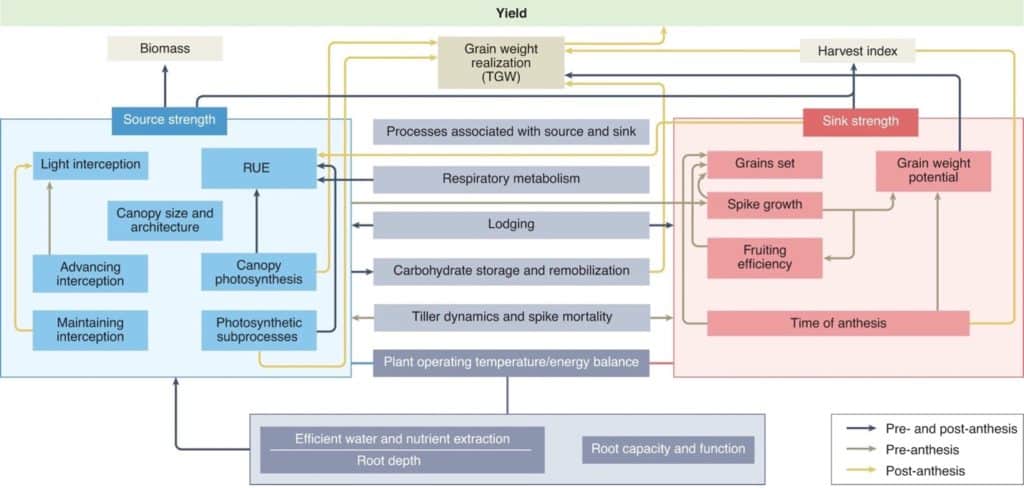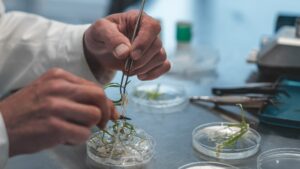As crop yields move towards their biophysical limits, achieving yield gains has become increasingly challenging. A team of international researchers are putting forth a new wiring diagram that displays the interrelationships of physical traits that influence wheat yield potential to alleviate these limitations.
Traditionally, scientists have worked based on the belief that, “crop yield is a function of photosynthesis (source), the investment of assimilates into reproductive organs (sinks) and the underlying processes that enable expression of both,” according to the study.
Research into understanding processes in sources and sinks that impact crop yields has spanned over many years. “For crop yield improvement, processes need to be understood as standalone mechanisms in addition to how these mechanisms perform at the crop level; currently there is often a chasm between the two,” shared a study from Oxford Academic.
While the initial source-and-sink model remains logical, an updated and more complex model could be useful as scientific understanding improves. By highlighting the linkages, the wiring diagram shows connections across traits that may have been overlooked, which could act as a decision support tool. The model works to inform new research hypotheses, breeding decisions and research investment areas, shared a press release from the International Maize and Wheat Improvement Center (CIMMYT).

The diagram can also act as a platform in which new empirical data is routinely charted and new concepts added. This creates a common point of reference for improving models in the future.
“If routinely updated, the wiring diagram could lead to a paradigm change in the way we approach breeding for yield and targeting translational research,” said Matthew Reynolds, head of wheat physiology at CIMMYT and lead author of the study. “While focused on yield potential, the tool can be readily adapted to address climate resilience in a range of crops besides wheat.”
The new diagram represents a milestone for deterministic plant breeding research by joining simpler models with crop simulation models. The model considers how source and sink strengths could interact with wheat developmental stages to predict yield.
“To ensure food and nutritional security in the future, raising yields must be an integral component of making crops more climate-resilient. This new tool can serve as a roadmap to design the necessary strategies to achieve these goals,” said Jeff Gwyn, program director of the International Wheat Yield Partnership (IWYP).











